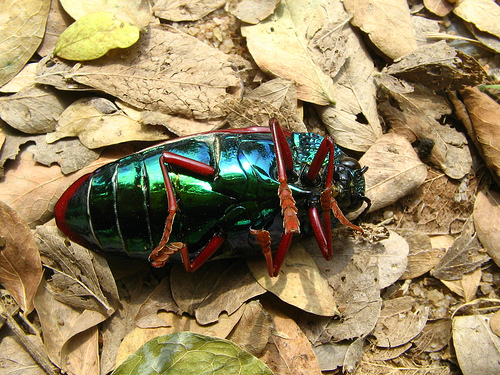Beetle harvest
 A scout from an ant colony (colony A) finds a dead beetle of mass
a distance
from his colony. At the same time, a scout from another colony (colony B) who is distance
from his colony, also finds the beetle. If ants from colony B can walk at speed
, and workers from
can each carry the mass
of ant flesh at any given time, what is the slowest speed (in m/s) at which workers from colony A walk so that workers from colony B never catch up and steal the beetle pieces?
A scout from an ant colony (colony A) finds a dead beetle of mass
a distance
from his colony. At the same time, a scout from another colony (colony B) who is distance
from his colony, also finds the beetle. If ants from colony B can walk at speed
, and workers from
can each carry the mass
of ant flesh at any given time, what is the slowest speed (in m/s) at which workers from colony A walk so that workers from colony B never catch up and steal the beetle pieces?
Details
- If an ant from colony B catches an ant from colony A, it will kill the ant from colony A.
- If an ant from colony A makes it to colony A with beetle flesh, he is safe from workers from colony B.
- The scouts both start out at the beetle.
- m
- m
- m/s
- g
- g
The answer is 3.46154.
This section requires Javascript.
You are seeing this because something didn't load right. We suggest you, (a) try
refreshing the page, (b) enabling javascript if it is disabled on your browser and,
finally, (c)
loading the
non-javascript version of this page
. We're sorry about the hassle.
To get back safe the ants from A have to get the beetle home before the ants from B can catch up, i.e. they have to get back quicker than the ants from B can reach colony A.
The scout from A has to return to the colony, then bring workers back to the beetle and home again, so they travel d A 3 times. Meaning the total distance they travel is x A = 3 d A = 3 × 3 = 9 .
The scout from B has to return to its colony and bring workers to colony A, so they travel d B twice and d A once. Meaning the total distance they travel is x B = d A + 2 d B = 3 + 2 × 5 = 1 3 .
Since t = v x , and we know the ants from A have to be quicker we now have t A ≤ t B ⇒ v A x A ≤ v B x B ⇒ v A ≥ x B x A v B .
Substituting in the numbers we get v A ≥ 1 3 9 × 5 = 3 . 4 6 2 .
The mass is irrelevant since there is no limit given for the number of ants,